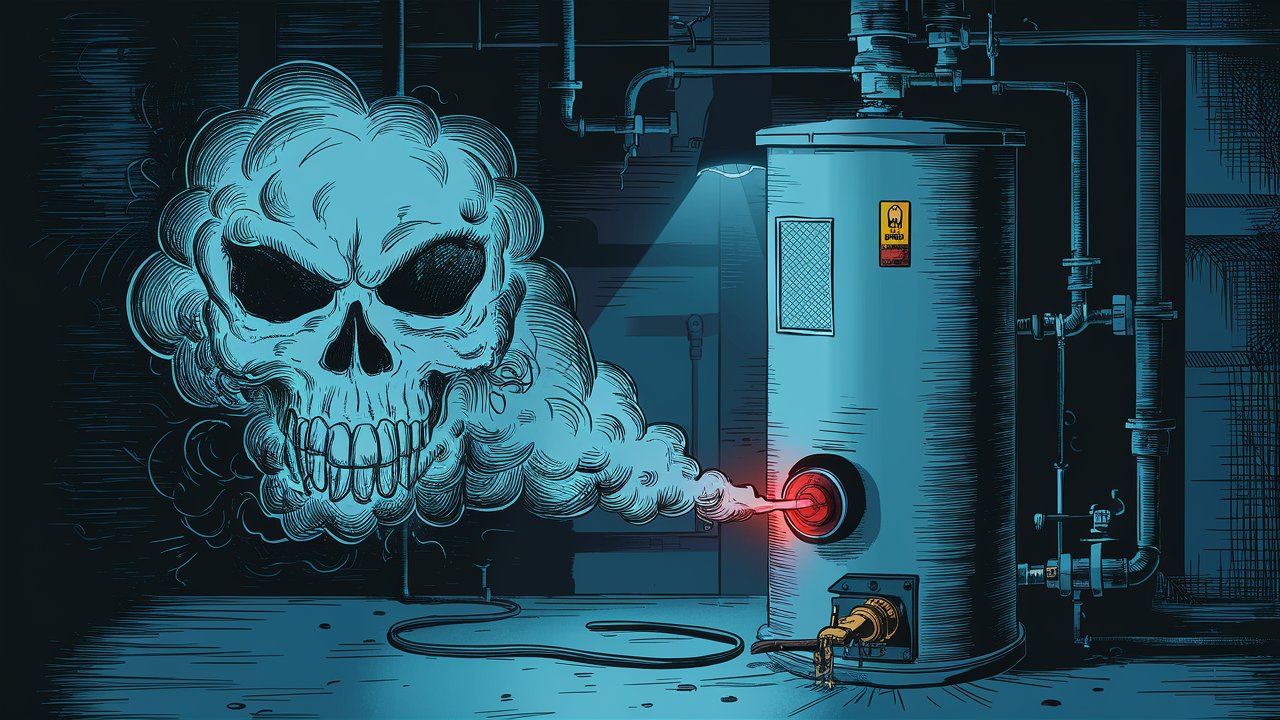A water heater can leak carbon monoxide due to several issues, posing serious health risks. Understanding the causes can help in preventing this dangerous situation. Common reasons include blocked or leaking vents, insufficient airflow, wrong fuel-to-air ratios, and dirty components. Addressing these problems ensures your water heater operates safely and efficiently.
- Blocked or Leaking Vent
- Insufficient Airflow
- Wrong Fuel-To-Air Ratio
- Dirty Components
1. Blocked or Leaking Vent
Vents are crucial for directing harmful gasses like carbon monoxide out of your home. If a vent is blocked or leaking, these gasses can accumulate indoors. Regularly inspecting and cleaning vents helps prevent blockages caused by debris or animal nests. Ensure vents are sealed properly to avoid leaks, which can lead to carbon monoxide exposure.
2. Insufficient Airflow
Water heaters require adequate airflow to function correctly. Insufficient airflow can lead to incomplete combustion, causing carbon monoxide production. Ensure the area around your water heater is clear of obstructions, and the room is well-ventilated. This allows for proper air circulation, reducing the risk of carbon monoxide leaks. Airflow issues can also arise from closed vents or doors that prevent fresh air from reaching the heater. This situation creates a vacuum that limits oxygen, leading to inefficient fuel burning. Proper ventilation setup and regular checks can alleviate these problems, ensuring safe operation.
3. Wrong Fuel-To-Air Ratio
An incorrect fuel-to-air ratio can result in inefficient burning of fuel, leading to carbon monoxide generation. This can occur if the burner is misaligned or damaged. Regular maintenance and adjustments by a professional technician can help ensure the correct fuel-to-air mixture, minimizing the risk of leaks.
4. Dirty Components
Dirty components such as burners and filters can impede the water heater’s performance. Buildup of soot and grime can alter the combustion process, resulting in carbon monoxide production. Routine cleaning and maintenance help keep these components in good condition, ensuring safe and efficient operation. Regular cleaning prevents soot accumulation, which can block pathways and impact combustion. Professionals can safely clean and inspect the components, reducing the risk of dangerous emissions.
How To Detect Carbon Monoxide Leaks In A Water Heater?
Performing a visual inspection can help identify potential carbon monoxide leaks. This can also help ensure that all the connections and seals are intact to prevent leaks.
- Check Vent Pipes
- Inspect Flame
- Examine Connections
- Check for Soot
- Test for Draft
How Much Carbon Monoxide Does A Water Heater Produce?
Under normal operating conditions, a water heater produces minimal carbon monoxide, which is safely vented outside. However, malfunctioning units can emit dangerous levels. Regular maintenance and inspections are essential to ensure your water heater remains safe and efficient, preventing excessive carbon monoxide production.
It’s important to be aware of the signs of carbon monoxide exposure, such as headaches, dizziness, and nausea. If you notice any of these signs then it might potentially mean that your water heater is emitting carbon monoxide in increased quantities.


